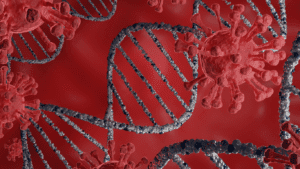Introduction
The Health and Wellness Centre (HWC) portal is an integral part of India’s healthcare infrastructure, designed to enhance the accessibility and quality of primary health services. As a digital platform under the Ayushman Bharat initiative, the HWC portal plays a vital role in streamlining healthcare services, empowering health workers, and promoting wellness among citizens. This blog delves into the various aspects of the HWC portal, its functionalities, benefits, and impact on India’s healthcare ecosystem.
1. What is the HWC Portal?
The HWC (Health and Wellness Centre) portal is a digital interface developed to support the operation of Health and Wellness Centres established under the Ayushman Bharat program. These centers aim to deliver comprehensive primary healthcare services, including preventive, promotive, and curative care.
The portal acts as a centralized system to:
- Monitor the performance of HWCs.
- Track service delivery.
- Maintain records of healthcare workers and patients.
2. Objectives of the HWC Portal
The primary goals of the HWC portal include:
- Improving Accessibility: Ensuring health services reach even the remotest areas.
- Streamlining Processes: Reducing paperwork and manual tracking through digitalization.
- Enhancing Transparency: Offering real-time data and analytics for better decision-making.
- Promoting Wellness: Shifting focus from curative to preventive care.
3. Key Features and Functionalities
The HWC portal is equipped with various features to ensure efficient healthcare delivery:
- Health Data Management:
- Centralized patient records.
- Disease surveillance and reporting.
- Real-Time Monitoring:
- Performance tracking of HWCs.
- Key health indicators for states and districts.
- Integrated Health Services:
- Linking HWCs with secondary and tertiary healthcare facilities.
- Facilitating telemedicine consultations.
- Digital Tools for Health Workers:
- Training modules.
- Access to guidelines and standard operating procedures.
- Community Engagement:
- Awareness campaigns.
- Tracking beneficiaries for immunization and other programs.
4. How the HWC Portal Works
The HWC portal functions as a bridge between various stakeholders in the healthcare ecosystem:
- Registration and Login:
- Health workers and administrators register on the portal.
- Unique IDs ensure secure access.
- Data Collection and Upload:
- Health data from HWCs is uploaded in real-time.
- Details include patient demographics, diagnosis, and treatment.
- Monitoring and Reporting:
- State and district authorities monitor HWC performance.
- Monthly and quarterly reports are generated for analysis.
- Integration with Other Platforms:
- Links to the Ayushman Bharat Pradhan Mantri Jan Arogya Yojana (AB-PMJAY).
- Connectivity with telemedicine platforms and mobile applications.
5. Benefits of the HWC Portal
It has revolutionized the way primary healthcare is delivered in India. Here are the key benefits:
For Citizens:
- Access to quality healthcare closer to home.
- Reduced dependency on secondary and tertiary hospitals.
- Availability of preventive care services, such as screenings and vaccinations.
For Health Workers:
- Digital tools to simplify workflows.
- Better coordination with higher healthcare facilities.
- Continuous training and capacity building.
For Administrators:
- Real-time data for informed policy decisions.
- Identification of healthcare gaps and resource allocation.
- Enhanced accountability and transparency.
6. Challenges and Future Prospects
While it has made significant progress, it faces certain challenges:
Challenges:
- Digital Divide: Limited internet connectivity in rural areas.
- Training Gaps: Need for continuous capacity building of health workers.
- Data Privacy: Ensuring the security of sensitive health information.
Future Prospects:
- Expanding telemedicine services through the portal.
- Integration with wearable health devices for real-time monitoring.
- Leveraging AI and big data for predictive healthcare trends.
FAQs About the HWC
Q1: What services are offered through HWCs?
A1: HWCs provide a range of services, including maternal and child health, immunizations, screenings for non-communicable diseases, and basic diagnostics.
Q2: Who can access the HWC portal?
A2: Health workers, administrators, and authorized personnel can access the portal for healthcare management.
Q3: How does the HWC portal promote wellness?
A3: The portal emphasizes preventive care through health education, regular check-ups, and community engagement.
Q4: Is the HWC portal connected to other health initiatives?
A4: Yes, the portal is integrated with AB-PMJAY and telemedicine services for comprehensive healthcare delivery.
Conclusion
The HWC portal stands as a beacon of innovation in India’s healthcare landscape. By bridging gaps in primary healthcare delivery, it has empowered health workers, ensured access to quality care for citizens, and set the foundation for a healthier nation. As technology advances, the portal’s scope and impact are bound to grow, paving the way for a robust and inclusive healthcare system.




